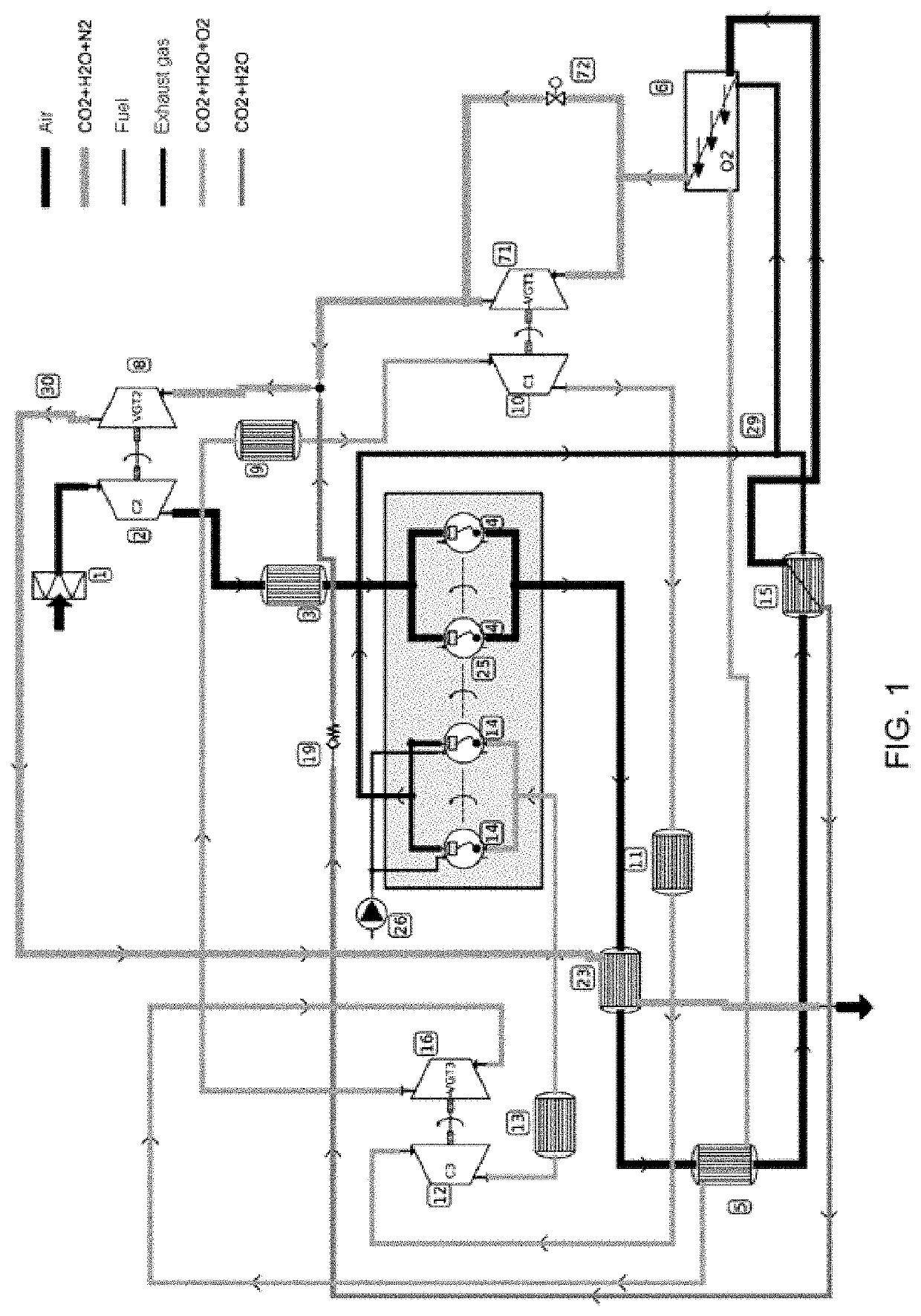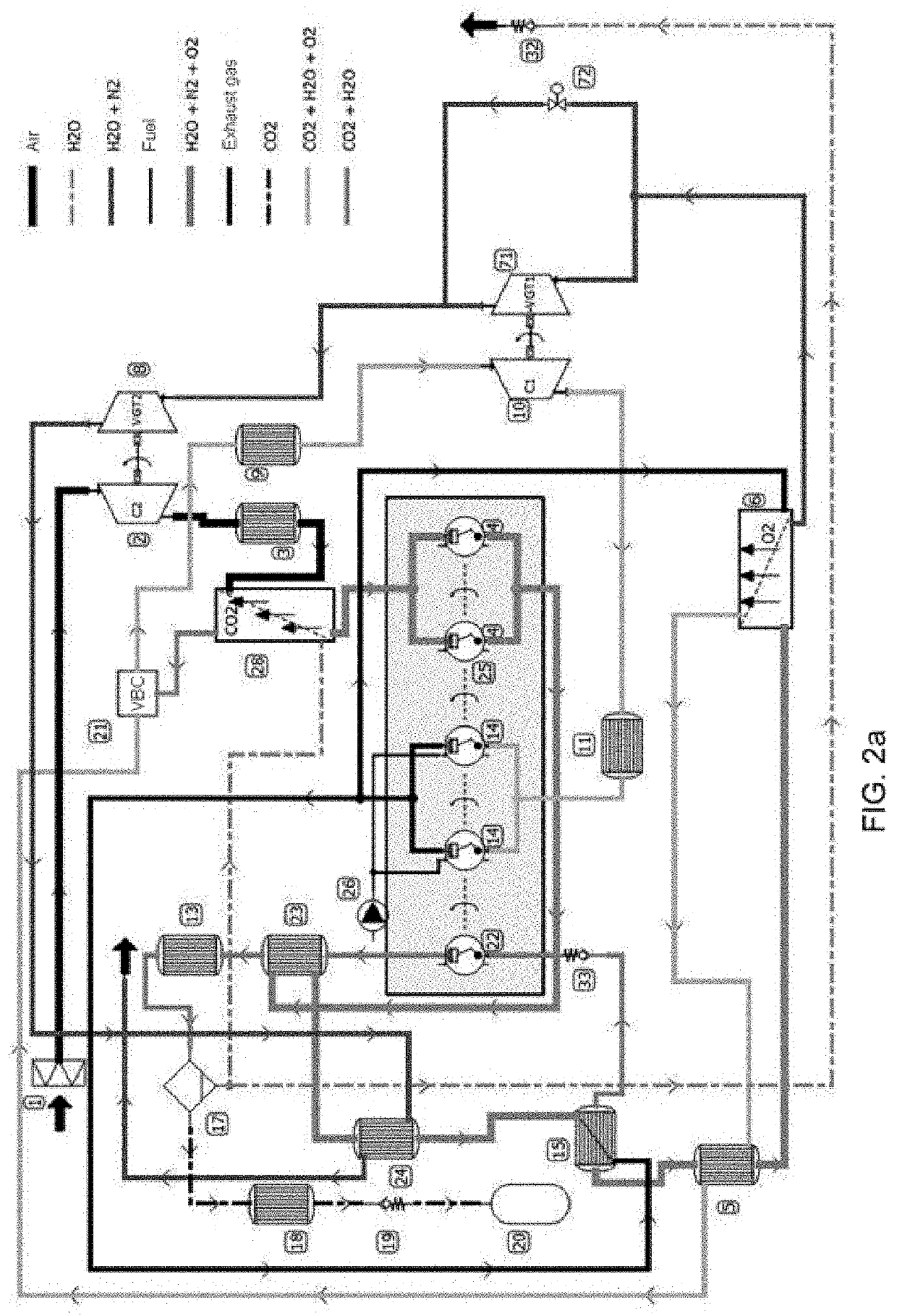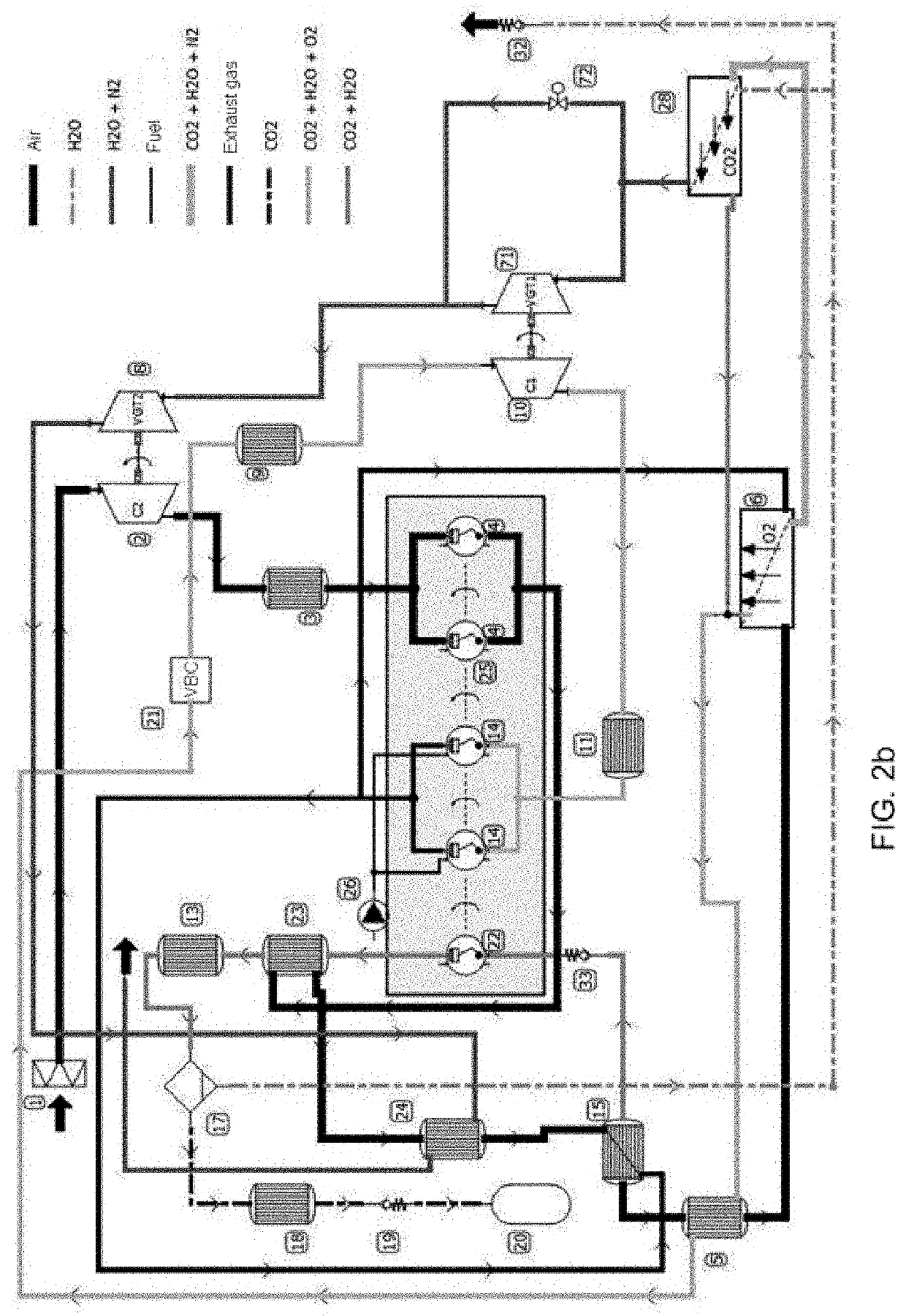Internal combustion engine and operating method of same
a technology of internal combustion engine and operating method, which is applied in the direction of machines/engines, combustion-air/fuel-air treatment, and separation processes, etc., can solve the problems of reducing the permeation flow through the membrane, affecting the effect of so2 gas, etc., to reduce pollution, prevent, and reduce the effect of nox emission into the atmospher
- Summary
- Abstract
- Description
- Claims
- Application Information
AI Technical Summary
Benefits of technology
Problems solved by technology
Method used
Image
Examples
embodiment 1
on (SI) Engine with a Premixed Mixture, Without Polluting Gas Emissions, and Without the Capture of CO2
[0107]Embodiment 1 is indicated for spark ignition (SI) engines with a premixed (homogeneous) mixture without the capture of CO2. Embodiment 1 is based on a process of deflagration combustion, with subsonic speed and without self-ignition of the mixture, for the production of net mechanical power.
[0108]The degree of charge (percentage of the maximum torque) of the engine is controlled by the O2 production rate in the MIEC membrane (6). This reduces pumping losses as it eliminates the use of throttling butterfly valves to throttle airflow.
[0109]The combustion temperature is controlled by dilution of the mixture of oxidizing agent (O2) and fuel (HxCyOz) with CO2 and H2O from the actual combustion and pre-cooling. This prevents using fuel for this task (standard practice in SI engines today).
[0110]Embodiment 1 does not propose capturing the CO2 emitted by the engine. However, it does...
embodiment 2
on (SI) Engine with a Premixed Mixture Without Polluting Gas Emissions and with Capture of CO2 Produced and Removal of Atmospheric CO2
[0129]Embodiment 2 is indicated for spark ignition (SI) engines with a premixed (homogeneous) mixture with capture of atmospheric and produced CO2. Therefore, it is within the category of engines that remove CO2 from the atmosphere (emissions rate <0). Embodiment 2 is based on a process of deflagration combustion, with subsonic speed and without self-ignition of the mixture, for the production of net mechanical power.
[0130]The degree of charge (percentage of the maximum torque) of the engine is controlled by the O2 production rate in the MIEC membrane (6). This reduces pumping losses as it eliminates the use of throttling butterfly valves to throttle airflow.
[0131]The combustion temperature is controlled by dilution of the mixture of oxidizing agent (O2) and fuel (HxCyOz) with CO2 and H2O from the actual combustion and pre-cooling. This prevents usin...
embodiment 3
Ignition (CI) Engine with a Stratified Mixture and Diffusion Combustion, with an Effective Variable Compression Ratio Controlled by the O2 Production Rate; Without Polluting Gas Emissions and Without the Capture of CO2
[0158]Embodiment 3 is indicated for compression ignition (CI) engines with a stratified mixture (diffusion combustion) without the emission of pollutants and without the capture of CO2. For the production of net mechanical power, embodiment 3 is based on a diffusion combustion process, with self-ignition by detonation of the premixture and combustion speed controlled by the amount of movement of fuel streams.
[0159]The degree of supercharging affects the percentage of the maximum torque in each regime through the effective compression ratio of the cycle. This effective compression ratio is variable and is controlled by the O2 production rate in the MIEC membrane. This represents a concept of size reduction, where the cylinder capacity of the engine can be reduced and t...
PUM
| Property | Measurement | Unit |
|---|---|---|
| temperatures | aaaaa | aaaaa |
| pressures | aaaaa | aaaaa |
| thickness | aaaaa | aaaaa |
Abstract
Description
Claims
Application Information
 Login to View More
Login to View More - R&D
- Intellectual Property
- Life Sciences
- Materials
- Tech Scout
- Unparalleled Data Quality
- Higher Quality Content
- 60% Fewer Hallucinations
Browse by: Latest US Patents, China's latest patents, Technical Efficacy Thesaurus, Application Domain, Technology Topic, Popular Technical Reports.
© 2025 PatSnap. All rights reserved.Legal|Privacy policy|Modern Slavery Act Transparency Statement|Sitemap|About US| Contact US: help@patsnap.com



